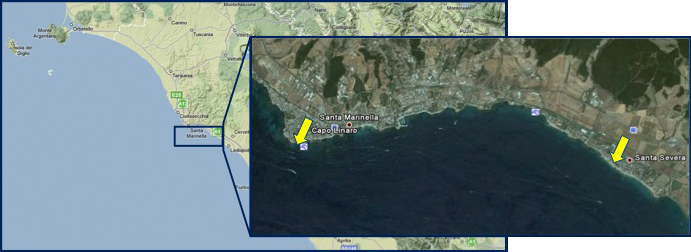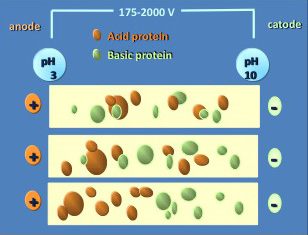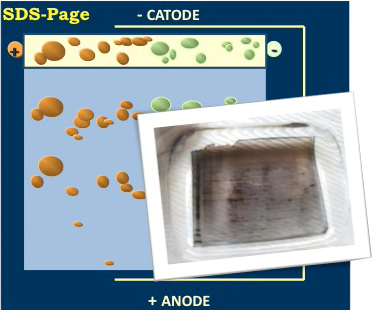Descrittori biochimici per le fanerogame marine
Le fanerogame marine costituiscono uno dei sistemi marini più produttivi e svolgono un ruolo cruciale nelle dinamiche e nel mantenimento degli ecosistemi costieri (ossigenazione delle acque, cibo e riparo per vari organismi, riduzione dell'idrodinamismo e quindi dell'erosione costiera). Sono Angiosperme Monocotiledoni che producono frutti e semi, discendenti di piante terrestri che hanno colonizzato l’ambiente marino circa 100 milioni di anni fa. Presenti in tutti i continenti, tranne l'Antartide, sono rappresentate da 72 specie, tra cui alcune a rischio di estinzione, come Posidonia oceanica, mentre altre in espansione, come Halophila stipulacea, considerata specie invasiva.
Formano ampie praterie sottomarine che svolgono un ruolo cruciale nelle dinamiche e nel mantenimento degli ecosistemi marini costieri (ossigenazione delle acque, cibo e riparo per vari organismi, riduzione dell'idrodinamismo e quindi dell'erosione costiera).
Posidonia oceanica, considerata specie chiave, è elencata nella Direttiva Habitat 92/43/CEE, e riconosciuta come indicatore della qualità delle acque marine costiere, in conformità alla direttiva quadro sulle acque (WFD 2000/60/UE). Purtroppo, il crescente impatto delle attività antropiche nelle aree costiere è responsabile di una diffusa regressione di questa specie. Il declino delle praterie di Posidonia oceanica è causato dal disturbo antropico che determina modifiche al regime idrologico e al trasporto littorale, da inquinamento/eutrofizzazione (es. acquacoltura intensiva) e dai danni meccanici (es. ancoraggi). Le praterie di Posidonia sembrano anche vulnerabili ai cambiamenti climatici.
Halophila stipulacea è specie tropicale, dominante nel Golfo di Aqaba (Mar Rosso), dove cresce sia in ambienti poco profondi che profondi. Originaria dell'Oceano Indiano, del Golfo Persico e del Mar Rosso, questa specie è un migrante Lessepsiano in Mediterraneo e ha recentemente invaso il Mar dei Caraibi, sostituendo le specie autoctone. Per via della natura invasiva, un numero crescente di studi sono volti a comprendere la sua capacità di di adattarsi a nuove condizioni e prosperare in una vasta gamma di ambienti.
Lo studio di queste (e altre) specie di fanerogame si è perciò basato sullo sviluppo e la combinazione di descrittori sensibili e misurabili, in grado di rivelare alterazioni ambientali. Questo approccio sembra essenziale per il monitoraggio delle praterie. Gli indicatori attualmente utilizzati per il monitoraggio delle praterie danno indicazioni a livello individuale, di popolazione o di comunità; tuttavia, molti di loro hanno bassa sensibilità e spesso è necessaria la combinazione/integrazione di più indicatori per ottenere informazioni significative.
L'individuazione di nuovi indicatori, in grado di dare informazioni ecologicamente rilevanti in tempi brevi è dunque un problema cruciale. Nel 2004 è stato individuato un nuovo descrittore: la sintesi di composti fenolici, un descrittore biochimico di facile determinazione. I composti fenolici sono una classe di metaboliti secondari ampiamente distribuiti nelle piante terrestri e acquatiche, e la concentrazione di fenoli totali è da tempo considerata un marcatore biochimico di stress ambientale nelle piante terrestri. Elevate concentrazioni di composti fenolici sono state rilevate in piante di Posidonia esposte a differenti pressioni ambientali: in competizione con l'alga invasiva Caulerpa taxifolia, in risposta alla contaminazione da metalli, in vicinanza di impianti di acquacoltura intensiva. Alla determinazione dei fenoli totali è stato anche associata l’analisi elettroforetica bidimensionale delle proteine, per identificare modifiche di espressione in piante esposte e non a stress ambientali, una via possibile per identificare nuovi possibili marcatori delle condizioni di stress nelle piante.
Oltre al ruolo di indicatore la determinazione dei fenoli nelle fanerogame marine può dare indicazioni sulla pressione dell’erbivoria su queste piante: è stato studiato il ruolo della concentrazione di fenoli e della sua variazione in relazione alle condizioni ambientali, sulla pressione di erbivoria di un mollusco, Smaragdia souverbiana, che si ciba delle fanerogame. Lo studio su due specie di fanerogame, Zostera muelleri e Halophila ovalis, simpatriche in diversi siti/condizioni ambientali della costa orientale australiana, ha dimostrato la connessione tra concentrazione di fenoli e pressione dell’erbivoria, mettendo in luce come gli erbivori possano regolare top-down la dinamica delle fanerogame marine.
Recentemente, insieme con la quantificazione dei composti fenolici nei rizomi sono stati proposti altri descrittori: pigmenti fotosintetici, marcatori di stress ossidativo e le misure della diversità genetica, utilizzati con successo come marcatori della qualità dell’ambiente. Tutti questi marcatori possono essere valutati su uno stesso singolo ciuffo: questo permette una valutazione più accurata dello stato di conservazione della pianta, riduce l’impatto del campionamento e, non ultimo, riduce i costi del campionamento stesso. I marcatori biochimici (composti fenolici e pigmenti fotosintetici) sono stati applicati con successo anche ad altre fanerogame marine quali Cymodocea nodosa, Zostera noltii e Halophila stipulacea raccolte da siti diversi e condizioni ambientali differenti (C. nodosa e Z. noltii, laguna di Ria formosa, Faro, Portogallo; H. stipulacea, Golfo di Aqaba, Eilat, Israele).
Questo filone di ricerca si è sviluppato grazie a numerose collaborazioni, qui elencate in ordine di tempo, dalle prime alle più recenti: Agata Giallongo, Maria Di Bernardo e Letizia Anello del CNR - IBIM (Istituto di Biomedicina e Immunologia Molecolare) "Alberto Monroy" di Palermo; Andrea Peirano e Carla Micheli dell'ENEA (rispettivamente del Centro Ricerche Santa Teresa-La Spezia, e Centro Ricerche Casaccia-Roma); Isabel Barrote e João Silva dell'Università dell'Algarve/CCMAR di Faro (Portogallo); Gidon Winters del Dead Sea & Arava Science Center, Hazeva (Israele); Ian R. Tibbets e Renee A. Rossini della School of Biological Sciences dell’Università del Queensland a Brisbane (Australia), dove siamo state grazie a un Erasmus Mundus mobility grant del Programma NESSIE; Marlene Vasquez della Cyprus University of Technology di Limassol.
Pansini A., Stipcich P., Frasca S., Migliore L., Ceccherelli G. (2025). DIFFERENT THERMAL REGIMES AND SUSCEPTIBILITY TO HERBIVORY DO NOT CONSTRAIN SEAGRASS SEEDLING RESTORATION. Marine Environmental Research, 204, 106918. DOI: https://doi.org/10.1016/j.marenvres.2024.106918
Recovering seagrass ecosystems through restoration has become impellent to re-establish their functionality and services. Although the use of seedlings may represent an appropriate solution, little information is provided on the seedling-based restoration effectiveness with influence of biotic and abiotic interactions. Survival, morphological development and leaf total phenol content of transplanted Posidonia oceanica seedlings were evaluated under different origin, thermal regimes and herbivore pressure through a five-months field experiment in two MPAs, located on the west (cold) and east (warm) Sardinia coast to explore the effectiveness of seedling-based restoration. Seedlings originated from the two coasts responded differently to thermal regime site and herbivory pressure, as the warm-adapted ones survived less but developed more (and vice-versa) and resisted to the herbivory pressure increasing their phenol content, thus showing compensating responses. This study provided information on the P. oceanica seedling-based restoration by investigating abiotic and biotic interactions with the transplanted plants. It promotes the collection of beach-cast fruits from different coasts and their transplantation, regardless their origin, with no need of protecting seedlings from predators.
Winters G., Beer S., Willette D.A., Viana I., Chiquillo K.L., Beca-Carretero P., Villamayor B.B., Azcárate-García T., Shem-Tov R., Mwabvu B., Migliore L., Rotini A., Oscar M.A., Belmaker J., Gamlie I., Alexandre A., Engelen A.H., Procaccini G. and Rilov G. (2020). THE TROPICAL SEAGRASS HALOPHILA STIPULACEA: REVIEWING WHAT WE KNOW FROM ITS NATIVE AND INVASIVE HABITATS, ALONGSIDE IDENTIFYING KNOWLEDGE GAPS. Frontiers in Marine Science 7:300. DOI: 10.3389/fmars.2020.00300
Halophila stipulacea is a small tropical seagrass, native to the Red Sea, Persian Gulf, and the Indian Ocean. It invaded the Mediterranean Sea 150 years ago as a Lessepsian migrant, but so far has remained in insulated, small populations across this basin. Surprisingly, in 2002 it was reported in the Caribbean Sea, where within less than two decades it spread to most of the Caribbean Island nations and reaching the South American continent. Unlike its invasion of Mediterranean, in the Caribbean H. stipulacea creates large, continuous populations in many areas. Reports from the Caribbean demonstrated the invasiveness of H. stipulacea by showing that it displaces local Caribbean seagrass species. The motivation for this review comes from the necessity to unify the existing knowledge on several aspects of this species in its native and invasive habitats, identify knowledge gaps and develop a critical strategy to understand its invasive capacity and implement an effective monitoring and conservation plan to mitigate its potential spread outside its native ranges. We systematically reviewed 164 studies related to H. stipulacea to create the “Halophila stipulacea database.” This allowed us to evaluate the current biological, ecological, physiological, biochemical, and molecular knowledge of H. stipulacea in its native and invasive ranges. Here we (i) discuss the possible environmental conditions and plant mechanisms involved in its invasiveness, (ii) assess the impact of H. stipulacea on native seagrasses and ecosystem functions in the invaded regions, (iii) predict the ability of this species to invade European and transoceanic coastal waters, (iv) identify knowledge gaps that should be addressed to better understand the biology and ecology of this species both in its native and non-native habitats, which would improve our ability to predict H. stipulacea’s potential to expand into new areas in the future. Considering the predicted climate change scenarios and exponential human pressures on coastal areas, we stress the need for coordinated global monitoring and mapping efforts that will record changes in H. stipulacea and its associated communities over time, across its native, invasive and prospective distributional ranges. This will require the involvement of biologists, ecologists, economists, modelers, managers, and local stakeholders.
Beca-Carretero P., Rotini A., Mejia A.Y., Migliore L., Vizzini S., Winters G. (2019). HALOPHILA STIPULACEA DESCRIPTORS IN THE NATIVE AREA (RED SEA): A BASELINE FOR FUTURE COMPARISONS WITH NATIVE AND NON-NATIVE POPULATIONS. Marine Environmental Research, 153:104828. DOI: 0.1016/j.marenvres.2019.104828
Halophila stipulacea is a small tropical seagrass species native to the Red Sea. Due to its invasive character, there is growing interest in understanding its ability to thrive in a broad range of ecological niches. We studied temporal (February 2014 and July 2014), depth (5, 9, 18 m) and spatial (NB and SB) related dynamics of H. stipulacea meadows in the northern Gulf of Aqaba. We evaluated changes in density, morphometry, biomass, and biochemical parameters alongside the reproductive effort. In both sites, maximal growth and vegetative performance occurred in the summer with a marked increase of 35% in shoot density and 18% in biomass; PAR reduction with season and depth induced a significant increase of 28% in leaf area. Sexual reproduction efforts were only observed in July, and the density of plants carrying male or female flowers decreased significantly with depth. The favorable growth responses of H. stipulacea plants observed in the N-enriched NB site suggests their capacity to acclimate to human-disturbed nearshore environments
Rotini A., Tibbetts I.R., Migliore L., Rossini R.A. (2018) - THE TRADE-OFF BETWEEN DIGESTIBILITY AND PHENOL CONTENT INFLUENCES THE FOOD CHOICE OF THE OBLIGATE SEAGRASS-FEEDING NERITID SNAIL SMARAGDIA SOUVERBIANA. Journal of Molluscan Studies, 84(1): 12-18. DOI: 10.1093/mollus/eyx038
 Grazing influences the structure and function of seagrass meadows. Like terrestrial plants, seagrasses have evolved nutritional, structural and chemical mechanisms to either tolerate or resist grazing. Phenols are common secondary metabolites that have multiple roles, including grazing deterrence, and their content in seagrass tissues can vary both among species and within a single species in response to biotic and abiotic processes. Such variability influences the grazing behaviour of species that consume seagrass, but few studies have addressed mesograzers that consume or damage seagrass, such as the nerite Smaragdia souverbiana. We assessed the effect of environmentally-mediated differences in phenol concentration on these seagrass mesograzers by testing: (1) if phenol content is different between sites and seagrass species (Zostera muelleri vs Halophila ovalis) and (2) if S. souverbiana inflicts different amounts of damage on different seagrasses from different sites, according to their phenol content. Phenol content was consistently lower in Z. muelleri than H. ovalis, and concentrations were about 60% lower in both species at one of two sites in eastern Moreton Bay, Queensland. These differences corresponded to different foraging patterns of S. souverbiana, with the snails generally choosing the seagrass species with the lowest phenol content. These results suggest that S. souverbiana chooses among locally available seagrasses based on a trade-off between phenol content and digestibility (related to cell size). This work demonstrates how subtle local processes can create complex changes in seagrass–grazer interactions with potential ecological consequences at local and regional scales.
Grazing influences the structure and function of seagrass meadows. Like terrestrial plants, seagrasses have evolved nutritional, structural and chemical mechanisms to either tolerate or resist grazing. Phenols are common secondary metabolites that have multiple roles, including grazing deterrence, and their content in seagrass tissues can vary both among species and within a single species in response to biotic and abiotic processes. Such variability influences the grazing behaviour of species that consume seagrass, but few studies have addressed mesograzers that consume or damage seagrass, such as the nerite Smaragdia souverbiana. We assessed the effect of environmentally-mediated differences in phenol concentration on these seagrass mesograzers by testing: (1) if phenol content is different between sites and seagrass species (Zostera muelleri vs Halophila ovalis) and (2) if S. souverbiana inflicts different amounts of damage on different seagrasses from different sites, according to their phenol content. Phenol content was consistently lower in Z. muelleri than H. ovalis, and concentrations were about 60% lower in both species at one of two sites in eastern Moreton Bay, Queensland. These differences corresponded to different foraging patterns of S. souverbiana, with the snails generally choosing the seagrass species with the lowest phenol content. These results suggest that S. souverbiana chooses among locally available seagrasses based on a trade-off between phenol content and digestibility (related to cell size). This work demonstrates how subtle local processes can create complex changes in seagrass–grazer interactions with potential ecological consequences at local and regional scales.

 |
 |

